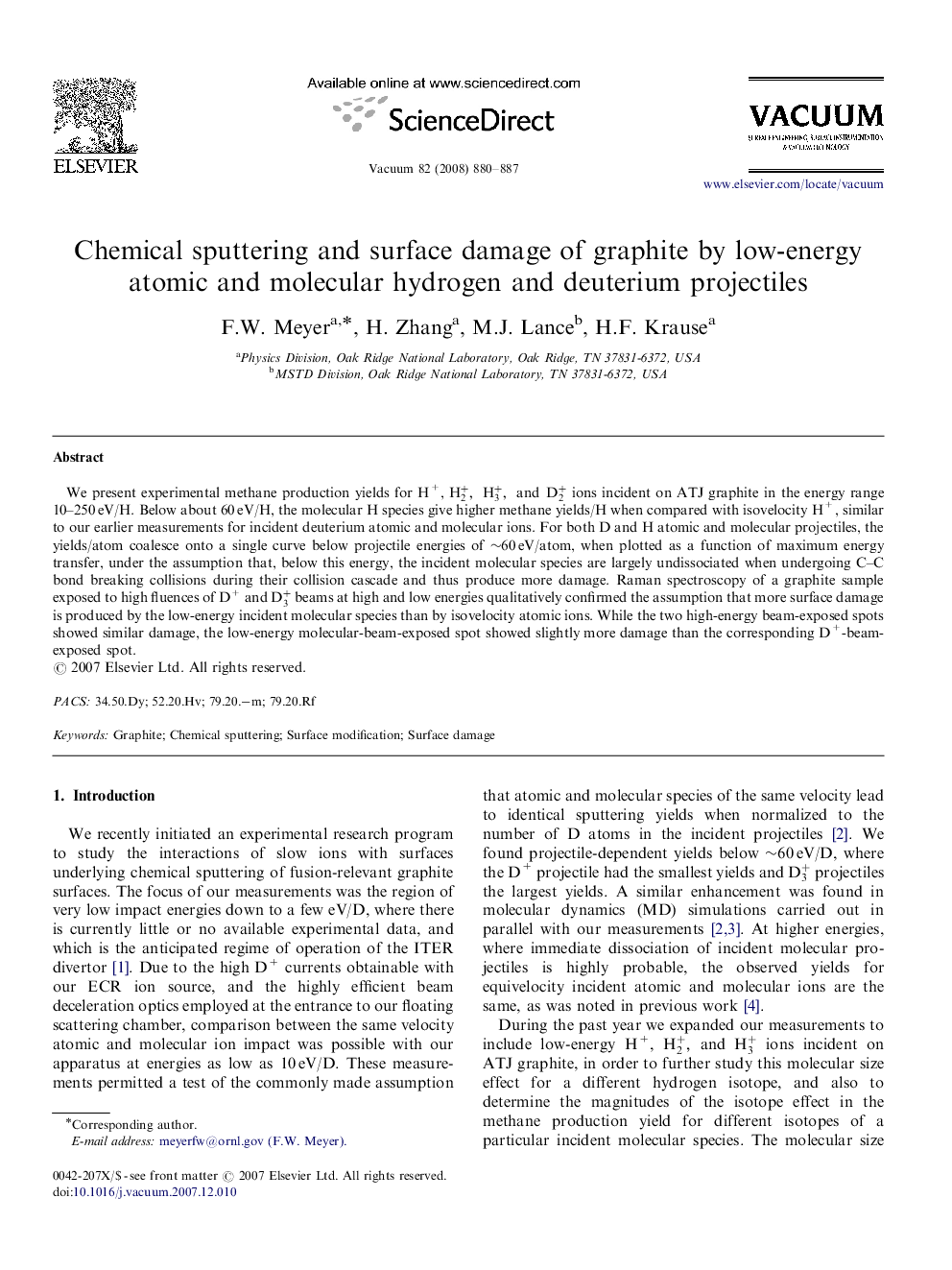| Article ID | Journal | Published Year | Pages | File Type |
|---|---|---|---|---|
| 1691690 | Vacuum | 2008 | 8 Pages |
We present experimental methane production yields for H+, H2+,H3+,andD2+ ions incident on ATJ graphite in the energy range 10–250 eV/H. Below about 60 eV/H, the molecular H species give higher methane yields/H when compared with isovelocity H+, similar to our earlier measurements for incident deuterium atomic and molecular ions. For both D and H atomic and molecular projectiles, the yields/atom coalesce onto a single curve below projectile energies of ∼60 eV/atom, when plotted as a function of maximum energy transfer, under the assumption that, below this energy, the incident molecular species are largely undissociated when undergoing C–C bond breaking collisions during their collision cascade and thus produce more damage. Raman spectroscopy of a graphite sample exposed to high fluences of D+ and D3+ beams at high and low energies qualitatively confirmed the assumption that more surface damage is produced by the low-energy incident molecular species than by isovelocity atomic ions. While the two high-energy beam-exposed spots showed similar damage, the low-energy molecular-beam-exposed spot showed slightly more damage than the corresponding D+-beam-exposed spot.
